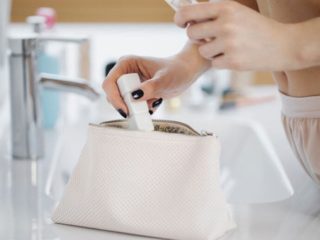Probiotics for Skin Care

Like our dawn egg, germs once suffered a terrible rap. And, for decades, we were advised to aggressively wash off germs in the title of clean, luminous skin.
Our bodies have been host into something known as the microbiome, which has a vital part in lots of the mechanisms that encourage homeostasis (maintaining the body in equilibrium ). The microbiome is made up of an estimated 100 trillion germs, such as bacteria, parasites, and viruses, that the majority of which live in our intestine.
In the last few decades, researchers are carrying a long, challenging, microscopic look in the individual microbiome and recognizing that not all germs are germy, dangerous, or unwanted.
The gut and skin: a sudden link
Our gut is that the HQ of our own body’s microbiome, but epidermis features its very own. And like the rest of our body, skin efficiently performs its purposes –security, temperature regulation, water retention, and much more –when it is in homeostasis. Our skin is colonized by plenty of germs, and the majority of them are not just benign but beneficial.
Science ascertains the intestine and skin microbiomes are inextricably connected. Actually, they’ve a great deal in common.
“By balancing ‘good’ and ‘bad’ bacteria your gut allows your skin to function as a barrier which prevents toxins and germs from entering the body,” states Freeling. “When your skin and gut are all healthy, your body will create more anti-inflammatory molecules to resist skin conditions like eczema, psoriasis, psoriasis, and rosacea.”
Indeed, studies have discovered that an unhealthy gut microbiome may cause inflammatory signs in the skin. A balanced microbiome, on the other hand, can fortify skin so that it can effectively counter factors which can”cause dryness, redness, and a diminished surface which rapidly shows signs of aging from ecological stressors,” based on Frieling.
Probiotics and prebiotics: eating bacteria for healthy skin.
Factors like stress and diet can result in an imbalance in our microbiome, however, the other side is also true: we could recover equilibrium with the addition of bacteria to our daily diet, especially in the shape of probiotics.
Probiotics are “friendly” live bacteria which benefit the human body, especially the digestive tract. In 1 study, individuals who took probiotic nutritional supplements for 12 weeks found diminished transepidermal water loss (if water evaporates in the skin, rendering it more moderate ) and improved hydration. In a different research, probiotics helped enhance skin barrier function.
Consuming prebiotics, a distinctive kind of dietary fiber that functions as a fertilizer for the good bacteria in your gut, can also be significant, states Frieling.
“If you choose the probiotic (the germs ), but do not take the prebiotic (the food source), it is likely that you’ll have a tricky time maintaining beneficial micro-organisms.”
Implementing probiotics into your skin
We understand better–and you will find skincare products teeming with germs.
Topical probiotics have been proven to raise ceramides (naturally located in the uppermost layer of epidermis, they help keep water) in areas with psoriasis, decrease the consequences of acne lesions and pathogenic germs, and decrease skin sensitivity in healthy men and women.
Make sure you talk with your wellbeing care practitioner, since probiotic skincare may not be for everybody. “According to a set of continuing research, these goods aren’t meant for anybody who’s immunosuppressed or has a very low amount of white blood cells,” warns Frieling.
Like our microbiome our skin simply attempts equilibrium. (Do not we all?) Whether this balance arrives through supplements, skin care, or a diet with foods that are more fermented, after our skin finds its happy medium, it is going to calm down, get more powerful, and radiate. And we will have our friendly neighborhood bacteria to thank you. It is a fantastic thing that germs stored its standing.
Easy-peasy prebiotics
If you are daunted by the notion of integrating raw chicory root or Jerusalem artichoke (two illustrious prebiotics) to your daily diet, do not be. It is possible to discover prebiotics aplenty in much more common foods like bananas, uncooked leeks, uncooked onions, raw apples, garlic, and flaxseeds.
Finding your ideal probiotic match
Before you purchase a probiotic solution, identify which breeds are contained and ask the business about the study behind it. Certain strains of germs function for various complexions, states dermatopathologist Gretchen Frieling, MD..



